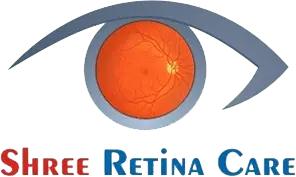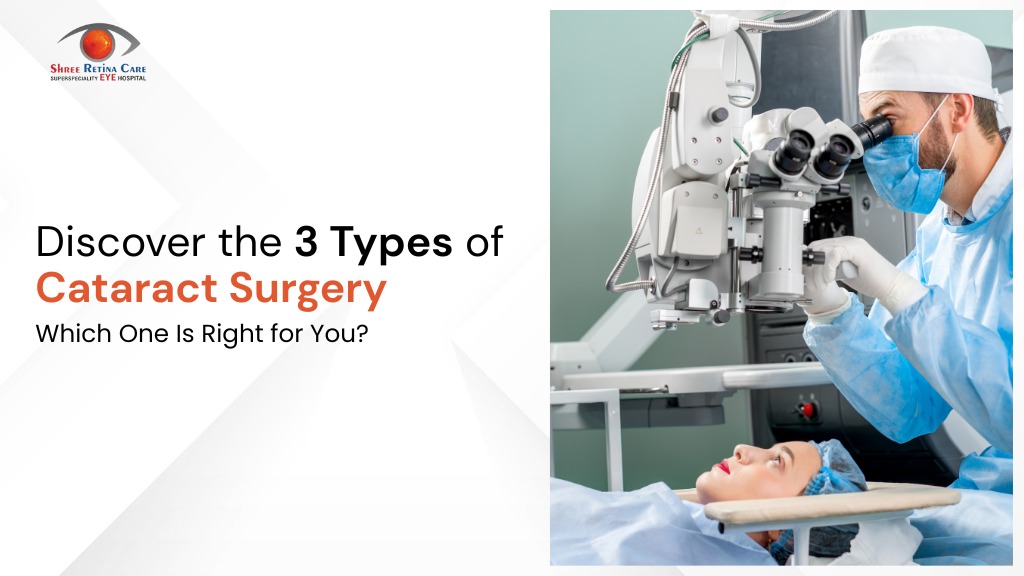What are the 3 Types Of Cataract Surgery: A Detailed Guide
If you or someone in your family has been advised to undergo cataract surgery, the first question that might come to mind is, what are the 3 types of cataract surgery, and which one is right for me? It’s a valid question, especially when your vision is at stake.
Cataracts can make everyday life harder, from reading and driving to simply recognising faces. Thankfully, with today’s medical advances, there’s not just one—but three types of cataract surgeries available, each suited to different needs.
Let’s understand them better, in the simplest way possible.
Why Is Cataract Surgery Needed?
Cataracts form when the natural lens in your eye becomes cloudy. It’s a slow process, but over time, this cloudiness starts affecting vision—making everything look blurry, dull, or hazy. You might notice trouble seeing at night, increased glare from lights, or needing brighter light to read.
When these symptoms start interfering with daily life, doctors usually suggest cataract surgery. It’s one of the most common and safest eye procedures done worldwide. The goal of the surgery is simple: remove the cloudy lens and replace it with a clear, artificial one to restore vision.
What Are The 3 Types Of Cataract Surgery?
Each type of surgery removes the cloudy lens and replaces it with a clear artificial one, called an intraocular lens (IOL). But how this is done varies:
1. Phacoemulsification (Phaco Surgery)
This is the most widely used method today.
- A very small cut is made in your eye.
- Ultrasound waves are used to gently break the cloudy lens.
- The broken pieces are removed, and a new lens is placed.
- Stitches are rarely needed, and recovery is usually quick.
Best for: Most cataract patients, especially when done early. It offers less discomfort, quicker healing, and fewer complications. It’s often performed under local anesthesia.
2. Extracapsular Cataract Extraction (ECCE)
This method is used when the cataract is too dense or hard for ultrasound to break down.
- A larger incision is made.
- The cloudy lens is taken out in one piece.
- A new lens is placed inside the eye.
- Stitches may be required, and recovery is slower compared to phaco.
Best for: Advanced or mature cataracts that can’t be managed through modern techniques. It’s less common today but still used when needed.
3. Intracapsular Cataract Extraction (ICCE)
Rarely used now, but still worth knowing.
- A bigger portion of the eye is opened.
- The entire lens and surrounding capsule are removed.
- The artificial lens is placed in a different part of the eye.
Best for cases with serious eye injury or complications (not common today). This method is considered outdated but may be necessary in very specific situations.
Comparison At A Glance
| Method | Incision Size | Recovery Time | Usage Today |
| Phacoemulsification | Very Small | Fast | Most Common |
| ECCE | Medium–Large | Moderate | For Dense Cataracts |
| ICCE | Large | Longer | Rare/Outdated |
What Are Intraocular Lenses (IOLs)?
After removing the cataract, doctors insert an intraocular lens to restore clear vision. These lenses stay in the eye permanently and do not need care like contact lenses.
Types of IOLs include:
- Monofocal: Fixed focus, usually for distance vision. Reading glasses may still be needed.
- Multifocal: Helps with both near and far vision.
- Toric: Corrects astigmatism along with cataract issues.
Your doctor will help choose the right IOL based on your vision needs, lifestyle, and overall eye health.
Which Cataract Surgery Is Right For You?
There’s no single best method for everyone. The ideal surgery depends on a few things:
- The stage and type of your cataract
- The shape and condition of your eye
- Your age and general health
- Any other eye conditions (like glaucoma or injury)
- Whether your cataract is soft or hard
Your eye specialist will do a full check-up and talk you through the best possible choice.
How Recovery Differs Between Methods
- Phacoemulsification: Short recovery, less discomfort, vision often improves within a few days
- ECCE: Longer healing time, may need more aftercare
- ICCE: Extended recovery, rarely used
No matter the type, you’ll be given eye drops to help avoid infection. Most people are advised to avoid heavy work, dusty places, and eye rubbing during recovery.
When Should You Talk To An Eye Specialist?
If your vision feels blurry, lights seem too bright, or reading becomes a strain, don’t wait too long. Cataracts don’t improve on their own, and delaying treatment can limit your options.
Early diagnosis helps you access simpler surgical options like phacoemulsification and avoid complications. An eye care clinic can guide you through every step—from diagnosis to surgery to post-care.
Conclusion
Now that you know the 3 types of cataract surgery—phacoemulsification, ECCE, and ICCE—you’ll find it easier to talk things through with your doctor. While phaco is the most common choice today, the right option always depends on your eye’s condition and what suits you best.
What makes surgery a practical solution for eye health is that it clears the root of the problem, helping you see clearly and live more comfortably.
The goal is simple: to bring your clear vision back. And with today’s medical care, it’s very much possible. Even small changes in vision shouldn’t be taken lightly—get it looked at early. The sooner you check with a specialist, the more options you’ll have to treat it safely and confidently.

